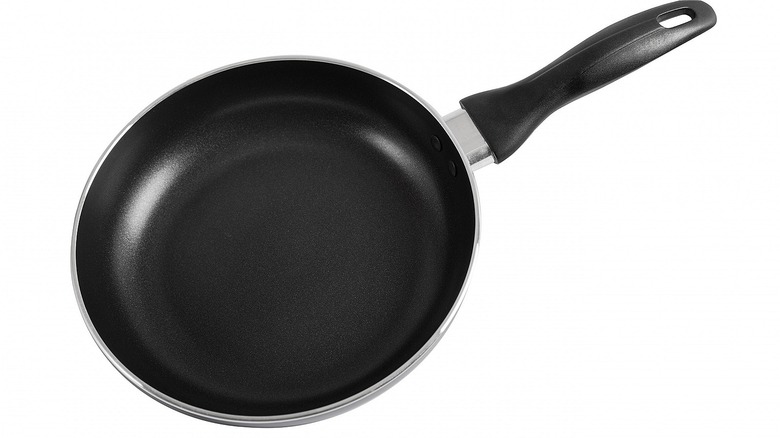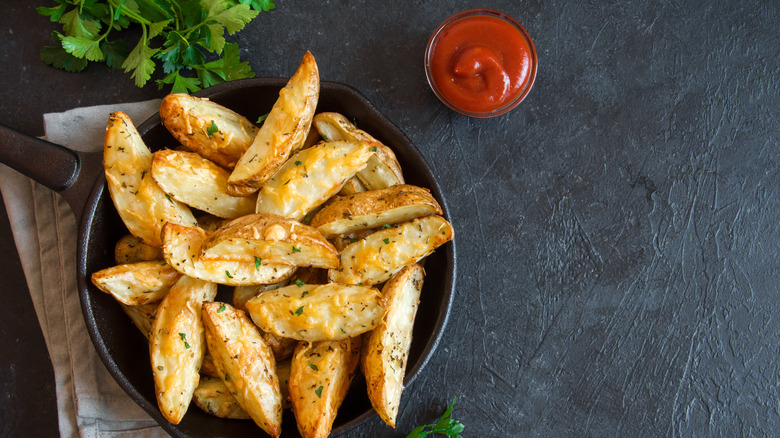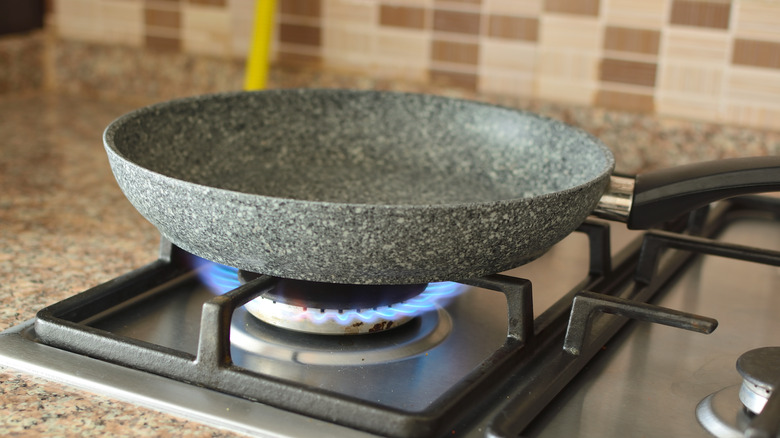Here's What You Need To Know About Deep-Frying In A Nonstick Pan
Some may say you shouldn't deep fry in a non-stick pan, but that isn't technically true. Everyone makes mistakes when deep frying, so it's important to know where things can go wrong for the safety of yourself and your food. While most people recommend deep frying in a cast iron skillet or stainless steel pan to have consistent heat while cooking and stay safe while frying, you can still use a nonstick pan if it's all you have. You just need to know a few facts before getting started.
You may be thinking that using a nonstick pan is just like other pans. If it heats up and cooks what you need to be cooked, that's all that matters, right? Wrong. All pan types have a specific job. A nonstick pan is made for particular cooking tasks, like frying eggs or sautéing vegetables. Created to make cleaning up easier, a nonstick pan has a coating on it, like Teflon, so the food you're cooking doesn't stick and fall apart in the pan (via Food Network). This type of pan wasn't really made for deep frying chicken or french fries, but that doesn't mean it can't do the job.
The coating can melt if you're not careful
There are two things to keep in mind if you are planning to deep fry in a nonstick pan. First, if your pan has a nonstick coating on it, you must be mindful about temperature. As mentioned before, Teflon is a well-known coating on these types of pans and while the Teflon website provides many safety guidelines to follow, it's important to emphasize that the coating can melt if the heat gets too high. For Teflon, that temperature is 500 degrees F. This means if the coating on your nonstick pan melts, it can turn toxic (via Live Science).
Since deep frying temperatures are mainly between 350 degrees F and 375 degrees F, you should be okay to whip up some chicken wings or french fries in a nonstick pan if that's your only option (via USDA). But keep in mind that high temperatures can damage that nonstick coating, making it no longer nonstick. So be sure you know the temperatures you're frying at, and be sure to keep an eye on how hot your oil gets.
Sometimes they aren't deep enough
Another thing you should prioritize for successful deep frying is whether or not your pan is actually deep enough to fry the food you want. A lot of nonstick pans are too shallow for true "deep" frying. When deciding to deep fry in a nonstick pan, try to gauge how much food you are frying and how big the pieces are. If it's unable to be fully submerged in the oil, you may end up with the unfortunate end result of burnt or undercooked food. If you're working with a shallow pan, there's also a chance there will be a lot of oil splatter, risking burns to you while you cook or even a grease fire from too much spilled oil.
We recommend using only nonstick pans that are deep enough to handle both the oil and the food you're cooking, and if you don't have that, maybe just stick to frying smaller foods like fries or pickles. Take care not to overcrowd the pan so everything is cooked completely — Serious Eats notes that when the frying vessel is too full, the oil's temperature can drop. Lastly, don't try and fill the whole pan up with oil, go to about halfway so the oil won't spill over. Keep all these factors in mind and you'll have a safe deep-frying experience in your very own nonstick pan.


